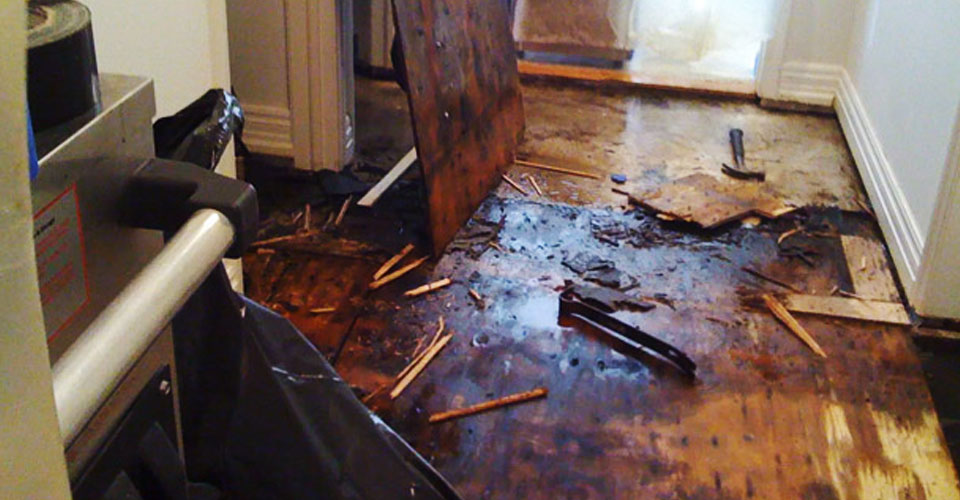Every person seems to have their unique idea in relation to Fire And Water Damage Prevention.

Water offers life, however water invasion on some parts where it's not meant to be can result in damage and also hassle. If the water leaks right into your structure, it can peel off away the surface as well as erode the product's structure. Mold and mildew and mildew additionally prosper in a wet setting, which can be harmful for your and also your family's health and wellness. In addition, residences with water damages smell mildewy and old.
Water can originate from lots of resources like typhoons, floodings, ruptured pipes, leaks, and also sewer concerns. If you have water damage, it's better to have a working understanding of security preventative measures. Right here are a few standards on exactly how to deal with water damages.
Do Prioritize Residence Insurance Coverage Protection
Seasonal water damage can come from floodings, seasonal rains, as well as wind. There is additionally an occurrence of a sudden flood, whether it came from a defective pipe that unexpectedly breaks right into your residence. To shield your residence, obtain house insurance coverage that covers both disasters such as all-natural catastrophes, and emergency situations like busted plumbing.
Don't Forget to Shut Off Energies
When disaster strikes as well as you remain in a flood-prone area, switch off the main electrical circuit. Switching off the power protects against
When water comes in as water serves as a conductor, electrical shocks. Don't neglect to shut off the main water line valve as a means to prevent even more damages.
Maintain your furniture steady as they can move around and create additional damages if the floodwaters are obtaining high.
Do Keep Proactive as well as Heed Weather Alerts
If you live in a location pestered by floods, stay aggressive and prepared at all times. Pay attention to the information and emptying cautions if you live near a body of water like a creek, river, or lake.
Don't Ignore the Roof
Your roofing professional needs to take treatment of the damaged gutters or any other indications of damage or weakening. An evaluation will prevent water from flowing down your wall surfaces and also saturating your ceiling.
Do Focus On Small Leakages
There are red flags that can attract your interest and indicate to you some damaged pipelines in your home. Indicators of red flags in your pipes consist of bubbling paint, peeling off wallpaper, water streaks, water stains, or leaking sounds behind the wall surfaces. Repair service and evaluate your plumbing fixed before it results in substantial damages to your residence, funds, and also an individual problem.
Don't Panic in Case of a Ruptured Pipeline
Timing is vital when it comes to water damages. If a pipe bursts in your residence, instantly shut off your primary water valve to reduce off the source and prevent even more damage. Call a trusted water damage repair expert for assistance.
Water offers life, yet water intrusion on some components where it's not meant to be can result in damage and aggravation. In addition, homes with water damages smell old and also musty.
Seasonal water damages can come from floods, seasonal rainfalls, as well as wind. Signs of red flags in your pipelines include gurgling paint, peeling wallpaper, water streaks, water stains, or leaking sounds behind the wall surfaces. If a pipe ruptureds in your residence, quickly shut off your major water valve to reduce off the source as well as protect against more damages.
Some Do's & Don't When Dealing with a Water Damage
DO:
Make sure the water source has been eliminated. Contact a plumber if needed. Turn off circuit breakers supplying electricity to wet areas and unplug any electronics that are on wet carpet or surfaces Remove small furniture items Remove as much excess water as possible by mopping or blotting; Use WHITE towels to blot wet carpeting Wipe water from wooden furniture after removing anything on it Remove and prop up wet upholstery cushions for even drying (check for any bleeding) Pin up curtains or furniture skirts if needed Place aluminum foil, saucers or wood blocks between furniture legs and wet carpet Turn on air conditioning for maximum drying in winter and open windows in the summer Open any drawers and cabinets affected for complete drying but do not force them open Remove any valuable art objects or paintings to a safe, dry place Open any suitcases or luggage that may have been affected to dry, preferably in sunlight Hang any fur or leather goods to dry at room temperature Punch small holes in sagging ceilings to relieve trapped water (don't forget to place pans beneath!); however, if the ceiling is sagging extremely low, stay out of the room and we'll take care of it DO NOT:
Leave wet fabrics in place; dry them as soon as possible Leave books, magazines or any other colored items on wet carpets or floor Use your household vacuum to remove water Use TV's or other electronics/appliances while standing on wet carpets or floors; especially not on wet concrete floors Turn on ceiling fixtures if the ceiling is wet Turn your heat up, unless instructed otherwise

Do you like reading up on Fire And Water Damage Prevention? Try leaving a comment directly below. We would be pleased to find out your insights about this entry. In hopes to see you back again before long. Be sure to set aside a second to promote this blog if you appreciated it. Thanks a lot for going through it.